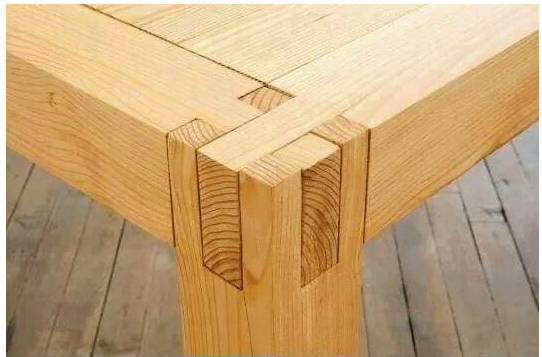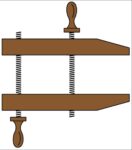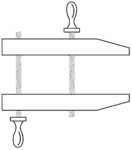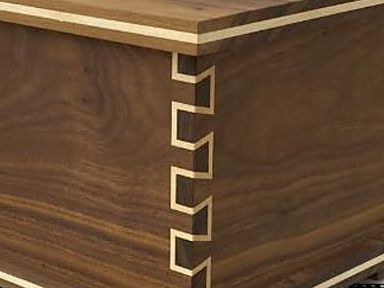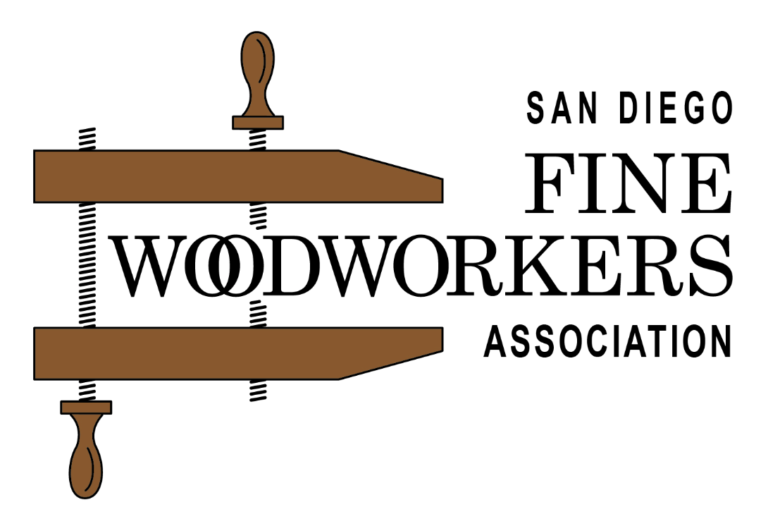What got me interested in the Shaper Origin was the prospect of creating cool joinery. The technical heart of fine woodworking is joinery, and selecting the right joints and executing them well is essential to a great woodworking project. So below I’ll be exploring some joints that can be made using our new Shaper Origin tool.
I’ll start by going out on a limb and categorize basic woodworking joints into three groups – rabbets and dados, mortise and tenon, and dovetails. With just those three you can build a whole bunch of woodworking projects. Rabbets and dados are easy – they are just straight cuts of a particular width. Shaper can do those without needing any design software, and other tools might even do a better job. So I’ll not mention those again. Mortise and tenon joints are ubiquitous in woodworking projects and are some of the strongest joints around. There are already many examples of Shaper making those very well.

The basic ones are pretty easy, and Shaper can also make tricky multiple-tenon joints and their matching mortises with ridiculously ease. The Workstation also helps a lot by providing great ways to hold workpieces so the ends can be routed. The last category is dovetails – or more generally how to join the ends of two boards at right angles. Dovetails are usually viewed as the ultimate fine woodworking joint for this use. However, I want explore some other joints that work just as well, and that Shaper is well suited to make.
Alternatives for Dovetails
None of these joints are original – that’s pretty impossible in woodworking – which has several thousand years of history and experimentation. However, the first joint I engineered for Shaper is the Knapp joint – also called pin and crescent, half moon, or scallop joint. Charles Knapp patented machines to produce this joint in 1867. Many American furniture manufacturers used it for making drawers from about 1870 through 1900. This joint – which was occasionally even called a dovetail – is a definitive identification for furniture of that time and place. However, the appeal of the dovetail was, and still is strong, and when machinery to automatically cut drawers with dovetails was developed, the Knapp joint fell into obscurity. However, I think it’s a very cool joint and that it deserves a renaissance.

Now I’m certainly not the first to make Shaper files for a Knapp joint, but I used this as a learning project to get familiar with Shaper, the required design process and workflow, and to construct some tooling to make it easier to cut multiple joints with Shaper and Workstation.
Double Dovetails
Sure, there are now several alternatives for making drawers with dovetail joints, but how many of those can make double dovetail joints? This is a joint for when you really want to show off, and was popularized along with the Incra jig. While one could theoretically cut these by hand, the precision and repeatability required makes that nearly impossible. Even when using jigs, making these is a complicated, multi-step process. Essentially you cut one set of dovetails – using contrasting woods – and glue them together. After that dries, you trim up the joint, then cut a smaller, second set of dovetails inside the first ones to make the final joint. Very impressive.

Lovetails
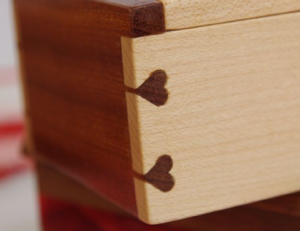
Another variation on dovetails, the overall shapes of lovetails are close to those of traditional pins and tails – but modified to be heart-shaped. These can be hand-cut, and are often found on heirloom pieces crafted for a special person. However, using Shaper makes these easy, consistent, and repeatable.
Box Joints
Box joints have been a machine-cut alternative for a corner joint ever since there were woodworking machines. Shaper has an optional ‘app’ to make box joints super easy. Instead of using a jig to cut fixed-width fingers and sockets, you enter the parameters of the joint – width of the stock and desired number of sockets – and Shaper figures out the dimensions to match. You don’t have to worry about partial sockets at each end.


Isoloc Joints
These joints were cut using templates which were options for the Leigh dovetail jig. These joints are designed for cutting with a router, and there are several variations – one sometimes called bear’s ears. By using different router bit diameters and contrasting woods, you can also make double joints – using a multi-step process similar to double dovetails above.
So while all those joints have been made using different jigs or machinery, what is unique about Shaper is that it can make all of them. And most are impractical or impossible to cut using hand tools.
Shaper Origin Workstation
The Workstation option is a great addition which allows you to easily machine smaller parts and has a permanent, reusable domino surface to avoid consuming Shaper tape. It has the capability to mount pieces both horizontally and vertically for machining – which is required for some of these joints. Dovetails and box joints are machined from the ends of the boards – the other joints above require mounting workpieces both vertically and horizontally. While there is good capability for Workstation to repeatedly mount pieces vertically – to machine the ends, the only choice for mounting pieces horizontally was using double-stick tape on the spoil board. This is not ideal for machining the multiple matching pieces needed when making these joints. So I developed a clamping system to easily and repeatedly mount the workpieces for machining the ‘other’ half of the above joints.

There’s More…
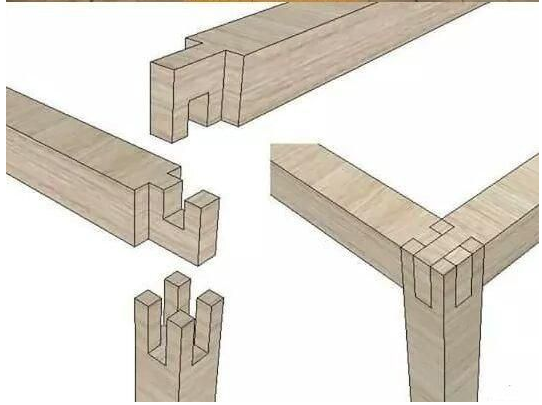
The previous examples are just the start of what joints Shaper can make. The next one I’m working on is an interlocking corner joint…
